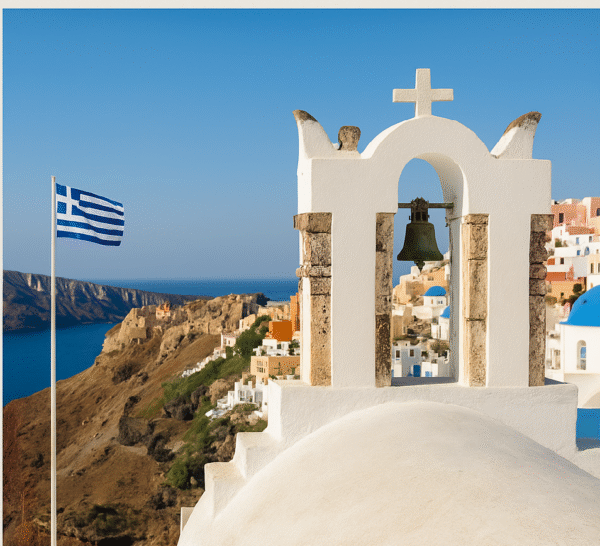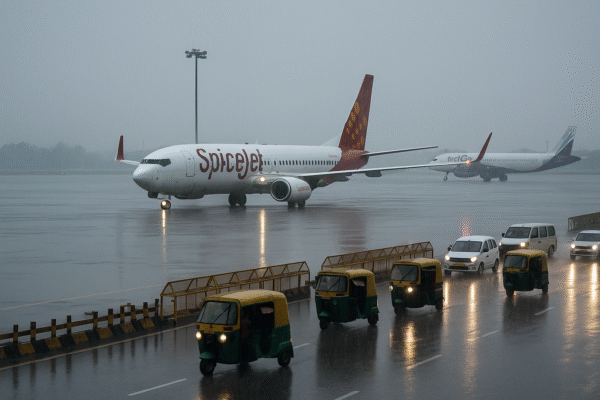Phoenix, Arizona, known for its sunshine and desert landscapes, is experiencing an unusual weather shift that has left tourists both fascinated and frustrated. The city, often celebrated for its reliable climate, is currently caught between the waning days of the monsoon season and the onset of its iconic dry heat. This transition is creating a unique mix of sudden storms, scattered showers, and rising dry conditions that have disrupted travel itineraries across the Valley.
For visitors expecting endless blue skies and warm desert evenings, the surprise has been palpable. The weather this weekend has alternated between fleeting downpours and sunny stretches, keeping both locals and tourists on their toes. While residents are somewhat accustomed to these end-of-monsoon fluctuations, travellers have been caught off guard, as many did not anticipate such an unsettled climate in September.
Tourists Stranded by Unpredictable Conditions
The biggest challenge for tourists has been the uncertainty surrounding outdoor activities. Phoenix is a city that thrives on open-air attractions, from hiking the iconic Camelback Mountain to exploring the Desert Botanical Garden. However, sudden storms have forced last-minute cancellations, stranding tourists who expected dry weather during their visit.
The Valley has seen isolated thunderstorms, especially in mountain areas and southeast Arizona, while downtown Phoenix has endured brief showers during overnight hours. While these storms are not widespread or long-lasting, their unpredictability has disrupted hiking tours, desert safaris, and sightseeing excursions. Visitors eager to experience the natural beauty of Arizona’s landscapes have had to adjust their schedules, often swapping outdoor adventures for indoor alternatives like museums, galleries, and dining.
Temperature Swings Add to Travel Confusion
Another element confusing travellers is the temperature fluctuations that accompany this weather shift. Nighttime lows in downtown Phoenix hover around 80°F, while the surrounding suburbs cool into the 70s. For many visitors, these changes feel milder than expected, but the humidity brought by the monsoon remnants has made evenings feel warmer and stickier than usual.
During the day, the sun often returns in full force, with temperatures soaring well above 90°F. Tourists accustomed to the “dry heat” that Arizona is famous for are instead encountering a blend of heat and humidity, making sightseeing more tiring. For those unfamiliar with desert weather, the constant adjustment between sudden rainfall, humid evenings, and dry, sunny afternoons has been a challenge.
End of Monsoon Season Raises Questions
The official monsoon season in Arizona typically runs through the end of September, bringing tropical moisture, dramatic lightning shows, and cooling rains to the desert. This year, however, the transition appears to be happening sooner than expected. Weather systems are pushing moisture eastward, leaving Phoenix with fewer storms and a faster return to dry conditions.
For tourists, this means the likelihood of witnessing Arizona’s famous desert rains and storm displays is shrinking. Historically, September can still bring heavy rain from tropical systems, but forecasters predict that this year’s end of the season may pass with little more than scattered showers. This has left some visitors disappointed, as the monsoon spectacle is one of the region’s unique natural attractions.
Impact on Tourism and Outdoor Experiences
Tourism in Phoenix heavily relies on outdoor activities. Hiking, desert jeep tours, hot-air balloon rides, and scenic drives are among the most popular attractions. With the current weather unpredictability, many operators have had to adjust schedules or prepare contingency plans.
For example, hiking in the desert becomes dangerous if sudden storms roll in, as trails can become slippery and flash floods a possibility in low-lying areas. Tourists who planned to take in Arizona’s landscapes at sunrise or sunset are now advised to check forecasts diligently and carry proper gear in case conditions change rapidly.
Despite these disruptions, Phoenix continues to draw crowds. Local tourism boards emphasize the city’s diverse range of indoor attractions. From the Heard Museum and Phoenix Art Museum to thriving local dining scenes, visitors can still immerse themselves in culture, cuisine, and history when outdoor plans are spoiled by the weather.
Preparing for the Dry Season Ahead
As Arizona gradually transitions out of the monsoon, tourists are encouraged to prepare for hotter, drier days in the weeks ahead. Forecasters warn that the remainder of September could be dominated by dry stretches with limited rainfall. While this provides more predictable conditions, it also means that daytime heat will intensify.
Travellers are advised to carry sunscreen, stay hydrated, and plan outdoor activities early in the morning or later in the evening to avoid the harshest temperatures. For those visiting from cooler climates, the desert heat can feel overwhelming, and adjusting expectations is key to enjoying the trip.
A Reminder of Arizona’s Unpredictable Charm
While the unusual weather has created challenges, it also adds to the sense of adventure that comes with visiting Phoenix. Arizona’s climate is famously unpredictable, and locals often say that no two years are alike when it comes to the monsoon.
For tourists, this unpredictability offers a chance to experience the desert in a rare transitional state—sometimes stormy, sometimes serene, but always striking. Whether strolling downtown streets after a light shower or watching the sun break through dramatic clouds, visitors are reminded that Phoenix’s appeal extends beyond its sunny reputation.
Final Word for Travellers
As the city shifts from the monsoon into its dry season, travellers to Phoenix should remain flexible, plan ahead, and keep an eye on weather forecasts. While sudden storms may still appear, the coming weeks will likely return the Valley to its classic dry and sunny conditions.
For now, Phoenix offers tourists a rare glimpse of its changing desert climate—a reminder that even in a city known for endless sunshine, nature always has surprises in store.
For more travel news like this, keep reading Global Travel Wire














